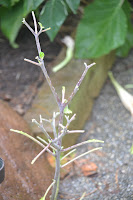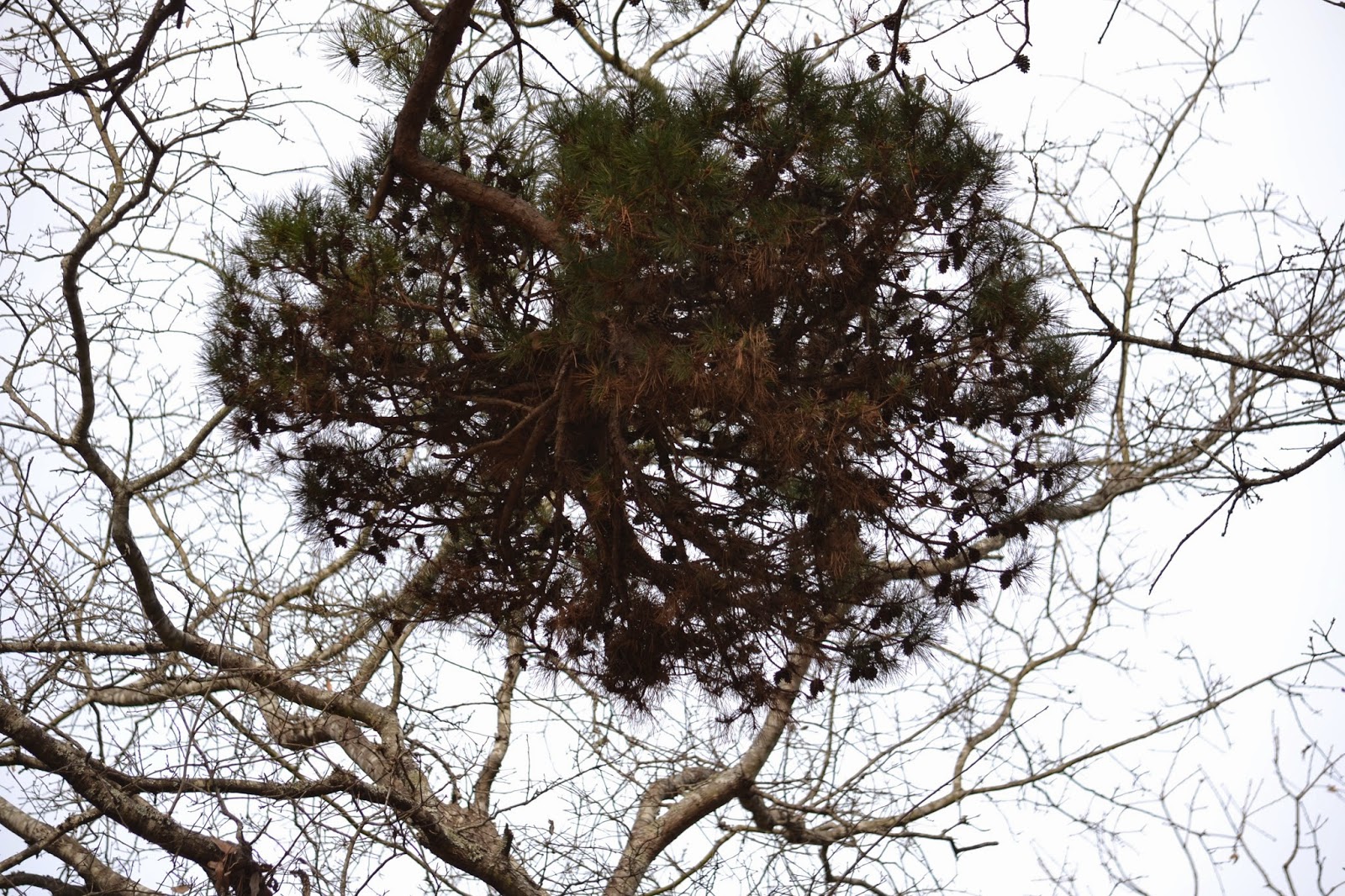My family is used to my weirdness. Case in point. . .my hubby, finding a hornworm, still attached to a moonflower, laying on our kitchen island.
He just raised his eyebrows and did not ask. I tell him it is all in the name of science. I had the worm there in order to take a photo and then dispatch it to tomato hornworm heaven. I apologized by saying I got sidelined reading up on this green jewel.
I think most gardeners are inclined to immediately squish this green worm. I am guilty of that as well. But first lets take a look at what we have here. The tomato/tobacco hornworm feasts voraciously on plants of the nightshade family which include tomato, pepper, potato, nicotiana and moonflower. I have also seen them eat virginia creeper.
 |
| A clue that you have a hornworm is a plant that looks like this. |
 |
| Or, you see the little round frass. |
The hornworm caterpillars get their name from the signature horns that grace their hind ends. Loathed by gardeners in its caterpillar stage, the tomato hornworm, has eight V-shaped marks on each side and a signature horn on the rear.
The tobacco hornworm, which closely resembles its tomato preferring cousin, has seven diagonal white lines on its sides and a curved horn. But, hey, who is counting.
Both caterpillars turn into large moths, known as sphinx or hawk moths, with four- to six-inch wingspans in colors ranging from brown and gold to pink and gray. Sometimes we call these moths hummingbird moths because they resemble, wait for it, hummingbirds. Like a hummingbird, they feed on a deep-lobed flowers and are most active during late afternoon and dusk.
 |
| tomato |
Moths, the nocturnal brothers of butterflies, are generally under-appreciated and yet many are as striking as their celebrated butterfly siblings. Like butterflies, moths perform necessary pollination tasks and serve as primary fodder for bats, birds, even small mammals.
One very good reason in keeping the caterpillar form of this moth around is that it is the primary pollinator of the agave plant. The Arizona desert agave makes tequila possible. No worm; no tequila. And, that my friends will be a sad, sad day.













.jpg)





